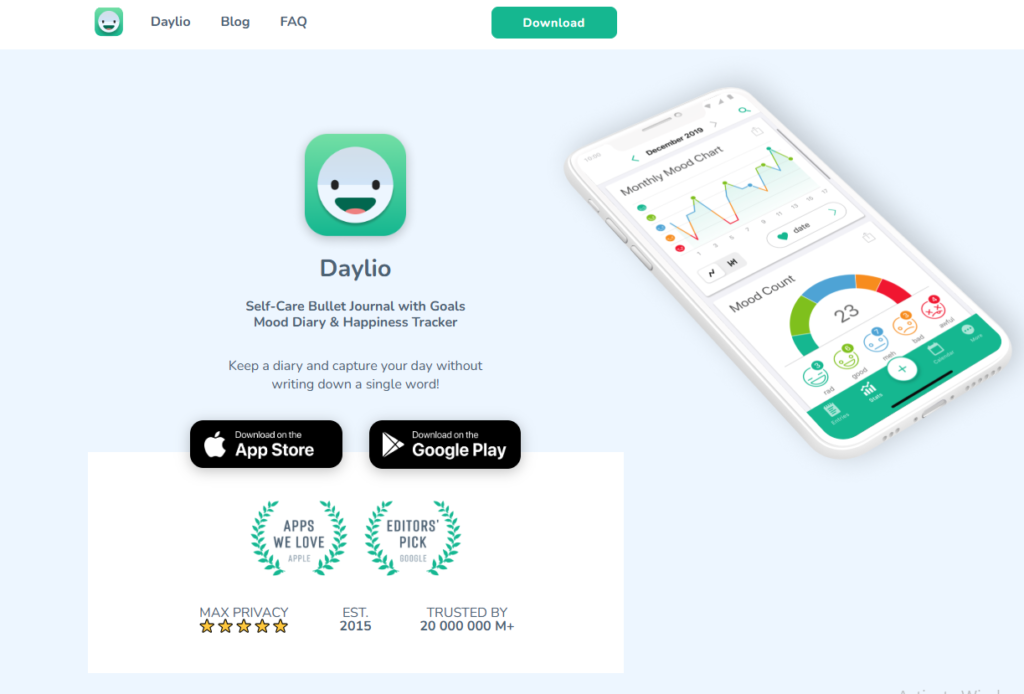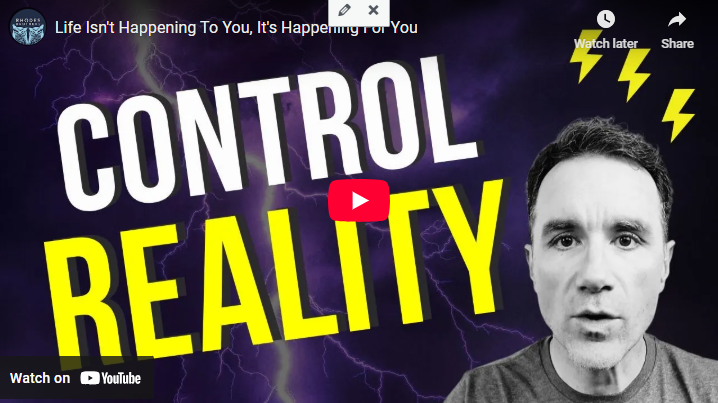For More Free Videos, Subscribe to the Rhodes Brothers YouTube Channel.
“Confidence isn’t something you’re born with; it’s something you build.” This powerful quote by John S. Rhodes, co-creator of the Cardinal Contact Method, perfectly encapsulates the essence of this guide. If you’ve ever felt stuck, unsure, or even paralyzed by self-doubt, know that building confidence isn’t reserved for the naturally charismatic or extroverted. You can cultivate it—step by step—with the right strategies.

You know that feeling when you walk into a room full of strangers, and all you want to do is shrink into the background? What if, instead, you could walk in with ease, strike up conversations naturally, and actually enjoy yourself? Sounds like a dream, right? It doesn’t have to be. The Cardinal Contact Method is a simple, practical approach that helps you build confidence step by step—no magic, no pretending, just real, lasting change.
In this guide, we’ll break down the five actionable steps of the Cardinal Contact Method, designed to help you connect with others, radiate confidence, and create opportunities in your personal and professional life. Backed by real-world examples, expert advice, and actionable strategies, you’ll learn how to go from shy and hesitant to bold and magnetic.
TL;DR
Don’t have time to read the full post? Here’s a quick summary of how the Cardinal Contact Method works:
- Step 1: Start Small – Learn to say “Hi” or “Hello” to strangers and build momentum.
- Step 2: Give Compliments – Practice offering genuine, low-risk compliments to others.
- Step 3: Ask Simple Questions – Use easy, throwaway questions to spark connection.
- Step 4: Combine Steps – Blend compliments and questions to deepen interactions.
- Step 5: Let Go of Outcomes – Smile, stay positive, and don’t worry about rejection.
Stick around for the full breakdown of each step, mistakes to avoid, and practical tips to implement these techniques in your daily life.
The Cardinal Contact Method: Building Confidence Step by Step
Confidence doesn’t come from waiting for the right moment; it’s built through action. The Cardinal Contact Method is designed to help you take small, manageable steps toward becoming more self-assured in any social situation. Here’s how to get started:
Step 1: Start Small – The Power of “Hi”
Confidence begins with the simplest of actions: a greeting. As John S. Rhodes says, “The most important step is to see yourself as the activator. You must take the first move.” This might sound trivial, but it’s a game-changer.
How to Do It:
- Identify someone nearby—a stranger at the coffee shop, someone passing on the street, or a coworker you don’t know well.
- Smile and say, “Hi” or “Hello.” That’s it. No need for follow-up or pressure to continue the conversation.
Pro Tip:
- Focus on how you deliver your greeting. Smile warmly, maintain eye contact, and keep your tone upbeat.
- If it feels intimidating, practice mentally or in front of a mirror. Visualization is a powerful confidence-building technique.
Why It Works:
- Saying “Hi” shifts you from being passive to active. It puts you in control of the interaction.
Tools to Help You Practice:

- Habitica: Turn saying “Hi” into a habit with this app by earning rewards for completing daily social goals.
Step 2: The Art of Giving Compliments
Once you’re comfortable with greetings, take it a step further: give someone a compliment. It’s a simple way to brighten someone’s day and create a positive connection without putting pressure on yourself.
How to Do It:
-
- Compliment external, non-intrusive things. For example:
-
-
- “Love your sunglasses!”
-
-
-
- “Great shoes!”
-
-
-
- “That’s a cool bag!”
-
-
- If they have a pet, try: “Your dog is beautiful!”
Tools to Practice:

- Compliment Tracker App: Use apps like Daylio to log your progress. Track how many compliments you give daily and note how people respond.
- Mirror Practice: Stand in front of a mirror and practice saying compliments with a genuine smile.
Why It Works:
- Compliments are low-risk but high-reward. They focus on something external, making them feel genuine and non-invasive.
- People appreciate being noticed for their choices, and this positive interaction helps build your social confidence.
Step 3: Ask Simple Questions
Questions are powerful conversation starters. By asking easy, low-pressure questions, you invite interaction without feeling the need to carry the conversation.
How to Do It:
- Start with “throwaway questions” that are straightforward and non-threatening. Examples:
- “Do you know where the nearest coffee shop is?”
- “Is there a park nearby?”
- “Where’s a good place to grab lunch around here?”
- If you’re nervous, ask the question while walking by—this reduces pressure to linger.
Pro Tip:
- If someone doesn’t respond, don’t take it personally. Laugh it off and reframe the moment as amusing rather than awkward. For example, think: “They must really be in a rush!”
Why It Works:
- Questions signal openness and invite engagement.
Step 4: Combine Compliments with Questions
Now that you’re comfortable with greetings, compliments, and questions, it’s time to combine them. This creates a natural, flowing interaction that feels effortless.
How to Do It:
- Start with a question, then follow up with a compliment. For example:
- At a coffee shop:
- Question: “Do you know if they have almond milk here?”
- Compliment: “By the way, I love your jacket!”
- At a coffee shop:
- At the park:
- Question: “Is there a dog-friendly area around here?”
- Compliment: “Your dog has such a great coat!”
Why It Works:
- Combining these techniques creates a natural rhythm. The question invites a response, and the compliment builds a positive connection.
- It ensures the interaction feels mutual, not one-sided.
Step 5: Smile, Let Go, and Keep the Energy High
The final step is all about mindset. As John S. Rhodes explains, “The outcomes don’t matter. What matters is that you took action.” Whether the interaction goes well or not, the key is to keep moving forward with positivity.
How to Do It:
- After completing Steps 1-4, don’t dwell on the outcome. Whether the person responds positively, negatively, or not at all, smile and move on.
- Focus on maintaining high energy and positivity. Confidence grows when you detach from the need for validation.
Why It Works:
- Confidence thrives when you let go of the fear of rejection. By focusing on the fact that you took action, you build resilience and self-assurance.
As Winston Churchill said, “Success is not final, failure is not fatal: It is the courage to continue that counts.”
Putting It All Together
Here’s how the steps might play out in a real-world scenario:
- Start Small: You’re in line at a coffee shop. You smile at the person next to you and say, “Hi.”
- Compliment: You notice their shoes and say, “Those are great sneakers!”
- Ask a Question: As you wait, you ask, “Do you know if their lattes are good here?”
- Combine Compliments and Questions: You follow up with, “By the way, love your scarf—it’s such a great color!”
- Let Go: The person responds warmly, and you both chat briefly. You leave the interaction feeling energized, regardless of the outcome.
Why the Cardinal Contact Method Works
Each step builds on the last, helping you ease into social interactions without overwhelming yourself. The method focuses on actionable, repeatable behaviors that gradually shift your mindset and boost your confidence. Over time, you’ll notice that these small steps lead to more meaningful connections and a stronger sense of self-assurance.
So, are you ready to take the first step? Start small, and see where it takes you!
Actionable Steps to Build Your Confidence (Cardinal Contact Method)
The Cardinal Contact Method is designed to help individuals build confidence through small, intentional steps that gradually increase comfort in social interactions. These steps can be tailored to different demographics and experience levels, ensuring everyone has a practical and achievable way to develop confidence. Below is a breakdown of strategies customized for various groups.
Beginners
Focus: Overcoming initial hesitation and building small wins.
Step-by-Step Strategies for Beginners:
- Start Small with Simple Greetings:
-
- Practice saying “Hi” or “Hello” to people in low-pressure environments, like cashiers, baristas, or neighbors.
- Why: Initiating small interactions helps ease the fear of rejection and builds momentum.
- Example: Smile and say “Good morning!” to someone passing by while walking your dog.
- Use Visualization to Prepare:
-
- Before initiating contact, visualize yourself confidently saying “Hi” and smiling. Imagine a positive response.
- Why: Visualization reduces anxiety and increases clarity in real situations.
- Set a Daily Goal:
-
- Aim to greet 2-3 strangers each day.
- Example: While running errands, say “Hi” to someone in the grocery store or compliment a cashier on their excellent service.
- Track Progress:
-
- Write down each time you engage with someone, focusing on what went well.
- Tool Tip: Use a notebook or note-taking app to log your interactions and reflect on improvements.
Intermediate Individuals
Focus: Expanding interactions and building connections.
Step-by-Step Strategies for Intermediate Individuals:
- Incorporate Compliments into Conversations:
-
-
- After greeting someone, add a compliment to make the interaction more engaging.
- Why: Compliments are low-risk and make others feel good, which creates a positive feedback loop.
-
- Example:
-
-
- “Hi! Love your jacket—it’s such a great color!”
- “Hi! Your dog looks so happy—what breed is it?”
-
- Ask Simple, Open-Ended Questions:
- Example questions:
-
-
- “Do you know a good place to grab coffee around here?”
- “What’s the best item on the menu here?”
- Why: This shifts the focus to the other person, making the interaction less intimidating for you and more engaging for them.
-
- Practice in Group Settings:
-
- Join low-pressure social groups like book clubs, fitness classes, or hobby meetups.
- Example: Introduce yourself to one or two people at the beginning of the event with a simple, “Hi, I’m [your name].”
- Experiment with Body Language:
-
- Focus on maintaining open body posture, making eye contact, and smiling.
- Why: Confident body language reinforces your verbal communication and makes you appear approachable.
Advanced Individuals
Focus: Mastering social confidence and creating deeper connections.
Step-by-Step Strategies for Advanced Individuals:
- Combine Compliments, Questions, and Humor
-
- Use a combination of a compliment and a playful or lighthearted comment to make interactions memorable.
- Example: “Hi! That’s a great hat—it’s giving me serious vacation vibes. Where can I get one?”
- Take the Lead in Social Situations
-
- Initiate group conversations by introducing yourself and others.
- Why: Leading conversations builds confidence while encouraging others to feel included.
- Example: At a networking event, say, “Hi, I’m [your name]. What brings you here today?”
- Handle Rejection Gracefully
-
- If an interaction doesn’t go as planned, reframe it as a learning experience.
- Example Thought: “Not everyone is in the mood to chat, and that’s okay. I’m proud of myself for trying!”
- Host Your Own Events or Meetups
-
- Organize small social gatherings to practice being the host and facilitating conversations.
- Why: Hosting puts you in control of the environment, which can boost your confidence in engaging with multiple people.
Students
Focus: Building social confidence in academic or extracurricular settings.
Step-by-Step Strategies for Students
- Start with Classmates or Club Members
-
- Say “Hi” to someone sitting next to you in class or at a club meeting.
- Why: Familiar environments make interactions feel safer and easier to initiate.
- Participate in Group Activities
-
- Join study groups, sports teams, or extracurricular clubs where you can engage with peers in a structured setting.
- Example: Suggest a group project idea or offer to organize a study session.
- Compliment and Connect
-
- Compliment a peer on something specific, like their presentation or style, and follow up with a question.
- Example: “You did a great job on that presentation! How long did it take you to prepare?”
- Practice Public Speaking in Small Doses:
- Volunteer to answer a question in class or participate in a debate.
- Why: Speaking in front of a group boosts confidence in other social scenarios.
Professionals
Focus: Building confidence in networking and workplace interactions.
Step-by-Step Strategies for Professionals
- Master the Elevator Pitch
-
- Practice a 30-second introduction that highlights who you are and what you do.
- Why: Having a clear introduction removes uncertainty and sets a confident tone for interactions.
- Example: “Hi, I’m [your name], and I work in [your field]. I’m passionate about [specific interest]. What about you?”
- Use Networking Icebreakers
-
- Prepare a few go-to questions for professional events.
- Example: “What inspired you to attend this event?” or “What’s been the most exciting project you’ve worked on recently?”
- Follow Up After Interactions
-
- Send a LinkedIn connection request or a short email referencing your conversation.
- Why: Following up reinforces relationships and shows that you value the interaction.
- Practice Speaking in Meetings
-
- Start by making supportive comments in group discussions (“I agree with [Name]’s point because…”). Gradually work toward presenting your own ideas.
- Example: Prepare one question or comment to contribute in every meeting.
Stay-at-Home Parents
Focus: Building confidence in everyday social settings.
Step-by-Step Strategies for Stay-at-Home Parents
- Engage in Local Communities
-
- Join parenting groups, playdates, or community events. Start with a simple “Hi, I’m [your name]. How old is your child?”
- Why: Shared experiences make conversations flow naturally.
- Compliment Fellow Parents:
-
- Compliment other parents on something specific, like how well-behaved their child is or their parenting style.
- Example: “Your daughter is so polite! How did you teach her to be so confident?”
- Attend Workshops or Classes
-
- Join classes like cooking, yoga, or book clubs to meet others while developing a skill.
- Why: Structured settings help reduce the pressure of initiating conversations.
- Host Small Gatherings
-
- Invite neighbors or other parents for coffee or a playdate.
- Example: “Hi, I’m organizing a small playdate next Saturday. Would you like to join us?”
Retirees
Focus: Staying socially active while enjoying new experiences.
Step-by-Step Strategies for Retirees
- Join Hobby Groups:
- Participate in book clubs, gardening groups, or walking clubs where you can meet others with similar interests.
- Why: Shared interests make starting conversations easier.
- Compliment and Connect
-
- Compliment someone in a group setting and ask a follow-up question.
- Example: “That’s a beautiful plant! How long have you been gardening?”
- Volunteer
-
- Engage with local organizations or charities where you can meet others while giving back.
- Why: Volunteering provides a meaningful way to connect with people.
- Practice in Familiar Settings
-
- Start conversations with neighbors or people in your community.
- Example: “Hi! I see you walking here often—do you live nearby?”
By tailoring the Cardinal Contact Method to different groups and experience levels, anyone can take actionable steps to build confidence and improve their social skills!
Common Mistakes to Avoid When Building Confidence
Even with the best intentions, it’s easy to fall into traps that undermine your efforts to build confidence. Recognizing these pitfalls is essential to staying on track. Here are some common mistakes to watch for—and how to avoid them:
Overthinking
Overthinking is one of the biggest barriers to confidence. It keeps you stuck in your head, worrying about what to say or how you’ll be perceived.
The Mistake:
- Spending too much time worrying about what to say, how you’ll be perceived, or replaying past interactions in your head.
- Overanalyzing how someone responded to you, leading to doubts or second-guessing yourself.
Why It Hurts Confidence:
- Overthinking creates unnecessary anxiety and prevents you from taking action.
- It keeps you stuck in your head instead of focusing on the present moment.
How to Avoid It:
- Adopt a “Just Do It” Mentality:
-
- Remind yourself that confidence grows through action, not perfection. Even if it feels uncomfortable, focus on taking the first step without overanalyzing.
- Reframe Mistakes:
-
- If you stumble in a conversation, remind yourself, “That was just practice—I’m getting better every time.”
- Set a Time Limit for Thinking:
-
- If you’re caught in overthinking, give yourself 10 seconds to decide, then act. For example, count to 10 in your head, then say “Hi” to the person you’re hesitating to talk to.
Skipping Steps
Confidence builds gradually, but skipping ahead without mastering the basics can set you up for failure.
The Mistake:
- Jumping ahead to advanced actions (e.g., hosting events or deep conversations) without mastering the basics like greetings or open-ended questions.
- Assuming you can skip small, foundational steps because they feel “too easy” or “unnecessary.”
Why It Hurts Confidence:
- Confidence builds gradually. Skipping steps leaves you unprepared for bigger challenges, making failures feel overwhelming.
- It can create unnecessary pressure, leading to frustration or giving up entirely.
How to Avoid It:
- Focus on Progression:
-
- Treat confidence-building like any skill—first, master the basics before moving on to advanced techniques. For example, practice saying “Hi” to strangers before attempting deeper conversations.
- Track Milestones:
-
- Celebrate small wins along the way to stay motivated. Each step matters—acknowledge and reward progress, no matter how small.
- Be Patient:
-
- Remember: Confidence is a journey, not a race. Trust that each step you take is getting you closer to your goal.
Focusing on Outcomes
Building confidence is about practice, not perfection. Focusing too much on how others respond can undermine your efforts.
The Mistake:
- Becoming overly concerned with how others respond to you, such as expecting instant approval or validation.
- Measuring your success by whether someone liked you, laughed at your joke, or continued the conversation.
Why It Hurts Confidence:
- It shifts your focus from practicing confidence to seeking external validation, which you can’t control.
- Negative or neutral responses may feel like failures, even when they’re not.
How to Avoid It:
- Redefine Success:
-
- Success isn’t about how others react—it’s about taking action. For example, if you said “Hi” to someone, you succeeded, regardless of their response.
- Detach from Perfection:
-
- Remind yourself that not every interaction will go perfectly—and that’s okay. Confidence grows by learning from all experiences, not just positive ones.
- Focus on the Process:
-
- Instead of asking, “Did they like me?” ask, “Did I take the step I wanted to?”
Being Too Serious
Confidence thrives in relaxed and playful interactions. Taking things too seriously can make conversations feel stiff or awkward.
The Mistake:
- Treating every interaction as a high-stakes event or overplanning what to say.
- Failing to incorporate lightheartedness, humor, or playfulness into your interactions.
Why It Hurts Confidence:
- Seriousness amplifies awkwardness, both for you and the other person, and can make interactions feel tense or unnatural.
- Humor and playfulness are key to creating a relaxed, friendly vibe, which puts both parties at ease.
How to Avoid It:
- Embrace Imperfections:
- Be okay with making small mistakes, laughing them off, and moving forward. For example, if you stumble over your words, smile and say, “Wow, that came out wrong!”
- Try Playful Icebreakers:
- Use humor or light comments to start conversations. For example, “I bet everyone here is thinking the same thing—when is it snack time?”
- Stay Curious, Not Perfect:
- Approach conversations with curiosity rather than pressure. Think, “I
wonder what this person is like?” instead of, “I have to impress them.”
Putting It All Together
Building confidence with the Cardinal Contact Method is about taking small, consistent actions. Avoiding these common mistakes ensures you stay focused on the process rather than getting discouraged. Here’s a quick recap of what NOT to do:
- Don’t Overthink: Take action without worrying too much about the outcome.
- Don’t Skip Steps: Build confidence gradually by mastering the basics first.
- Don’t Focus on Outcomes: Success is about effort, not external validation.
- Don’t Be Too Serious: Keep interactions light, playful, and relaxed.
By staying mindful of these pitfalls, you’ll create a smoother path to building confidence and enjoying the journey!
Frequently Asked Questions
How long does it take to see results?
You’ll likely notice small improvements within a week of consistent practice. Significant changes may take 1-3 months.
What if I’m too shy to start?
Begin by visualizing each step in your mind. Once you’re comfortable, move to real-world practice.
Can introverts build confidence using this method?
Absolutely! The Cardinal Contact Method focuses on small, manageable interactions that work for any personality type.
What if someone ignores me?
Laugh it off. Their response has nothing to do with your worth or progress.
Do I need to compliment strangers?
Yes, but keep it simple and genuine. Focus on external objects like clothing or pets.
How can I practice at home?
Use visualization techniques. Imagine yourself completing each step successfully.
Is this method only for social confidence?
No, it’s applicable in professional settings too, such as networking or public speaking.
What if I mess up?
There’s no such thing as failure in this process. Every attempt is progress.
How many people should I approach daily?
Start with 1-2 and gradually increase as you grow more comfortable.
Can I teach this to others?
Yes! Share these steps with friends or family who also want to build confidence.
Your Path to Confidence Starts Now
Building confidence is a journey, not a destination. By understanding and avoiding common mistakes like overthinking, skipping steps, focusing too much on outcomes, or being overly serious, you can create a clear path to success. Start with small, actionable steps like practicing greetings, offering compliments, and staying playful in interactions. Remember, progress is more important than perfection—each effort you make strengthens your confidence and brings you closer to your goals.
Take the first step today! Whether it’s saying “Hi” to a stranger, joining a local group, or practicing a new skill, every small action matters. Confidence grows through consistent practice and embracing the process.
Thank you for joining us to explore these tips! For more inspiration and practical advice, subscribe to the Rhodes Brothers YouTube Channel for the latest videos and information to help you succeed. Don’t wait—start building your confidence today!
Resource List
To further support your confidence-building journey, here are some helpful resources:
Books
- The Confidence Code by Katty Kay & Claire Shipman
- Feel the Fear and Do It Anyway by Susan Jeffers
- Atomic Habits by James Clear (for building consistent habits)
Videos
- TED Talk: Your Body Language Shapes Who You Are by Amy Cuddy
- TED Talk: How to Build Confidence—and Spark It in Others by Brittany Packnett
Apps and Tools
- Meetup: Join groups to practice social interactions in real-world settings.
- Daily Affirmations Apps like ThinkUp to reinforce positive self-talk.
Online Courses
- Confidence and Self-Esteem Mastery on Udemy
- Improve Your Social Skills by Dan Wendler (accessible through his website or book).
Communities
- Reddit: Subreddits like r/confidence or r/socialskills for peer support.
- Local Toastmasters Clubs: Practice public speaking and build social confidence.
Podcasts
- The Art of Charm (Topics on confidence and communication).
- The Confidence Podcast by Trish Blackwell.





